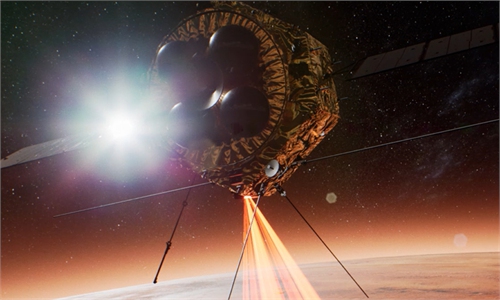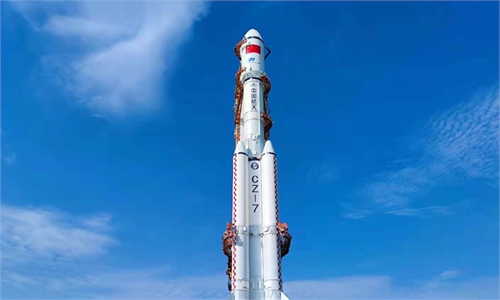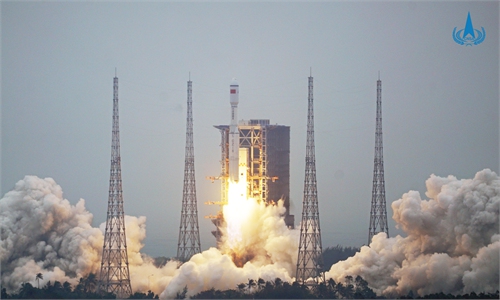China's new-generation medium size carrier rocket Long March-8 took off from the Wenchang Space Launch Center in South China's Hainan Province for a second flight at 11 am on Sunday.
The rocket successfully sent a total of 22 commercial satellites into their pre-determined orbits, an amount which is a record high for a single launch mission in the country's aerospace history.
The satellites in this commercial rideshare mission were designed and manufactured by seven entities and the users are from seven domestic commercial aerospace companies and two scientific research institutions, and they include optical remote sensing Taijing3-01, Taijing4-01 manufactured by the Minospace Co, Data collection satellite Tianqi-19 by the Shandong Institute of Aerospace Electronics Technology and Phospherus-1 also an optical remote sensing satellite by the Wuhan University.
Xiao Yun, the commander-in-chief for the rocket type, told the Global Times that the "carpooling" service provided by the Long March-8 has greatly lowered the threshold of orbital launch for clients, as it reduced the cost significantly.
Before the Sunday mission, the previous record of satellite amount launched in a signal mission in China was held by the Long March-6 in its maiden flight in 2015, during which 20 satellites were sent to their preset orbits.
According to the model's designers from the China Academy of Launch Vehicle Technology (CALT), a subordinate to the state aerospace giant China Aerospace Science and Technology Corporation (CASC), Long March-8 is capable of launching a payload of three to four and a half tons to the Sun-synchronous orbit. As a new member of the Long March carrier rocket family, the development of the Long March-8 aims to fill this gap, and the rocket model will be tasked with meeting surging demand for launch services from commercial satellite companies at home and abroad.
The Long March-8 took its maiden flight in December 2020, also from the Wenchang spaceport.
Compared with the Long March-8 Y1 rocket, the Y2 rocket for the Sunday mission has cancelled the two boosters, and the two-and-half stages design has now turned into a two-stage. The height of its nose cone has also shortened to 5.4 meters from eight meters, the CALT explained. This change has broadened the launch window for the commercial mission.
Duan Baocheng, a deputy commander-in-chief for Long March-8, said the rocket will perform 12 separation maneuvers to send the 22 satellites to their preset orbits, noting it's just like performing a "space ballet."
According to designers, they spent half a year in developing a three-layered distributer inside the nose cone to ensure the safety of the satellite-rocket separations. The distributer helps allocate suitable seats for each satellite passenger.
Li Jinglin, the orbit designer for the Long March-8, told the Global Times on Sunday that the speed, direction and order of the separations are key factors to determine the satellites' trajectory after the separation.
It was quite a challenge for designers to figure out such key factors for each passenger. The orbit designer team also conducted long-term simulation, observation and examination to make sure there would be no collision or any interference between any of the spacecraft, Li explained.
A constant change of flight mode of the rocket final stage made that happen, Li said.
The model has been dubbed the "Chinese version of SpaceX Falcon 9" for its potential to be reusable. The first stage of Long March-8 is expected to become reusable 10 times by 2025, and by 2035, the entire rocket is expected to be reusable, the CASC said in November 2020.
The Sunday mission of Long March-8 was the first commercial launch in the Wenchang spaceport, the Global Times learned from sources with the facility. The commercial launch marks a major advancement toward building a world-class space launch center.
In the long run, the Long March-8 will also be extremely smart, said the CASC. It will be able to adjust its flight status automatically if it encounters a malfunction, greatly improving the mission results.
Wu Yansheng, a senior official with the CASC, revealed in November that China aims to develop the first launch vehicle capable of vertical take-off and vertical landing by 2025.




